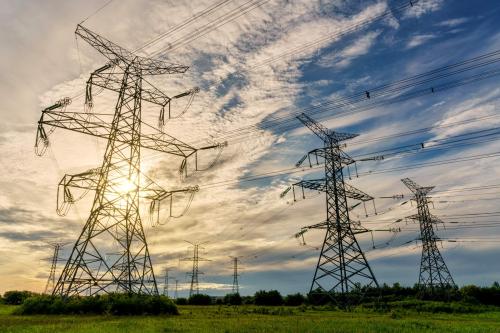This report describes research that was originally published in a special issue of Climate Change Economics in February 2018.
Two important design choices for a U.S. carbon tax policy are the use of the revenue and whether and how to include measures to address the competitiveness concerns of American businesses. Both of these policy design choices affect the political appeal and overall performance of the policy, and their effects can be interdependent. For example, a carbon tax that funds reductions in corporate income tax rates could make U.S. firms more competitive overall than they otherwise might have been.
In “The role of border carbon adjustments in a U.S. carbon tax,” Warwick McKibbin, Adele Morris, Peter Wilcoxen, and Weifeng Liu examine carbon tax design options in the United States using a model of the global economy. Through four policy scenarios the authors explore two overarching issues: (1) the effects of a carbon tax under alternative assumptions about the use of the resulting revenue, and (2) the effects of a system of import charges on carbon-intensive goods (“border carbon adjustments”).
Consistent with earlier studies, the authors find that the carbon tax raises considerable revenue and reduces CO2 emissions significantly. Gross annual revenue from the carbon tax with lump sum rebating and no BCA begins at $110 billion in 2020 and rises gradually to $170 billion in 2040. By 2040, annual CO2 emissions fall from 5.5 billion metric tons (BMT) under the baseline to 2.4 BMT, a decline of 3.1 BMT, or 57 percent. Cumulative emissions over 2020 to 2040 fall by 48 BMT.
Figure 7: Border Carbon Revenue by Region of Origin
Also consistent with earlier studies, the paper finds that the carbon tax has very small overall impacts on GDP, wages, employment, and consumption. Different uses of the revenue from the carbon tax result in slightly different levels and compositions of GDP across consumption, investment and net exports. Overall, using carbon tax revenue to reduce the capital income tax rate results in better macroeconomic outcomes than using the revenue for lump sum transfers. In a finding new to the literature, our results show that border carbon adjustments (BCAs) can have strikingly different effects depending on the use of the revenue and actually do more harm than good, depending on how the revenue is used.
In sum, a carefully designed carbon tax in the United States can reduce emissions significantly with minimal effect on the economy. McKibbin et al. find no evidence of meaningful emissions leakage abroad, even when the U.S. policy is unilateral. Using carbon tax and BCA revenue to reduce distortionary taxes produces better economic outcomes overall and for most individual sectors. To the extent that policymakers wish to protect the interests of energy-intensive trade-exposed industries with BCAs on imports, they should endeavor to tailor the adjustments to narrow, particularly vulnerable, subsectors so as not to inadvertently appreciate the U.S. dollar and do more harm than good overall.








